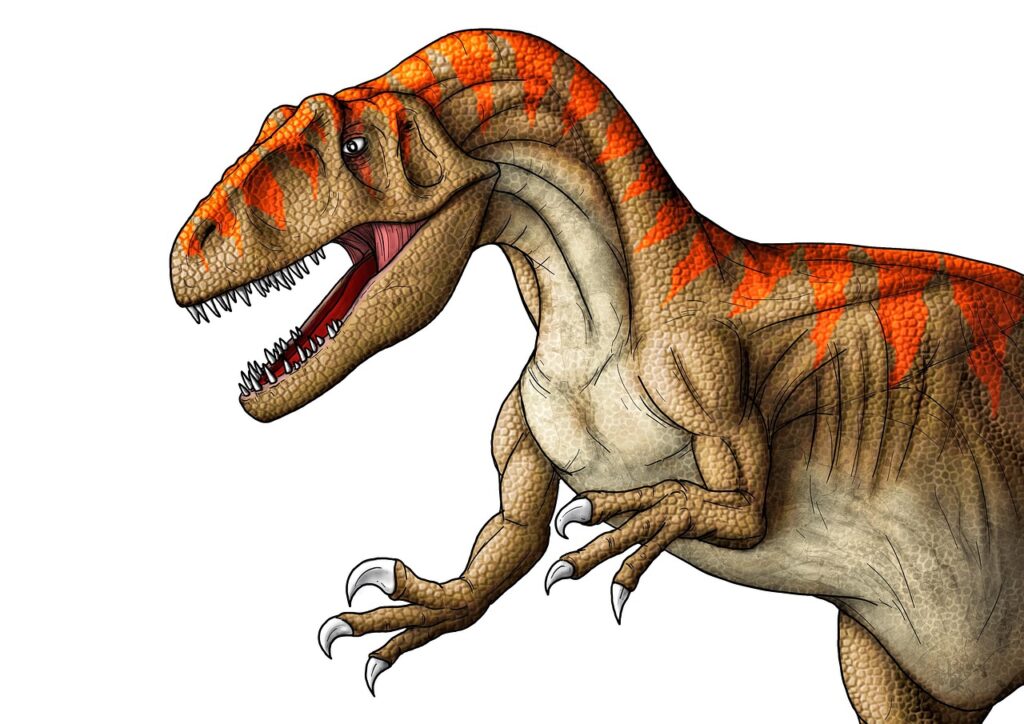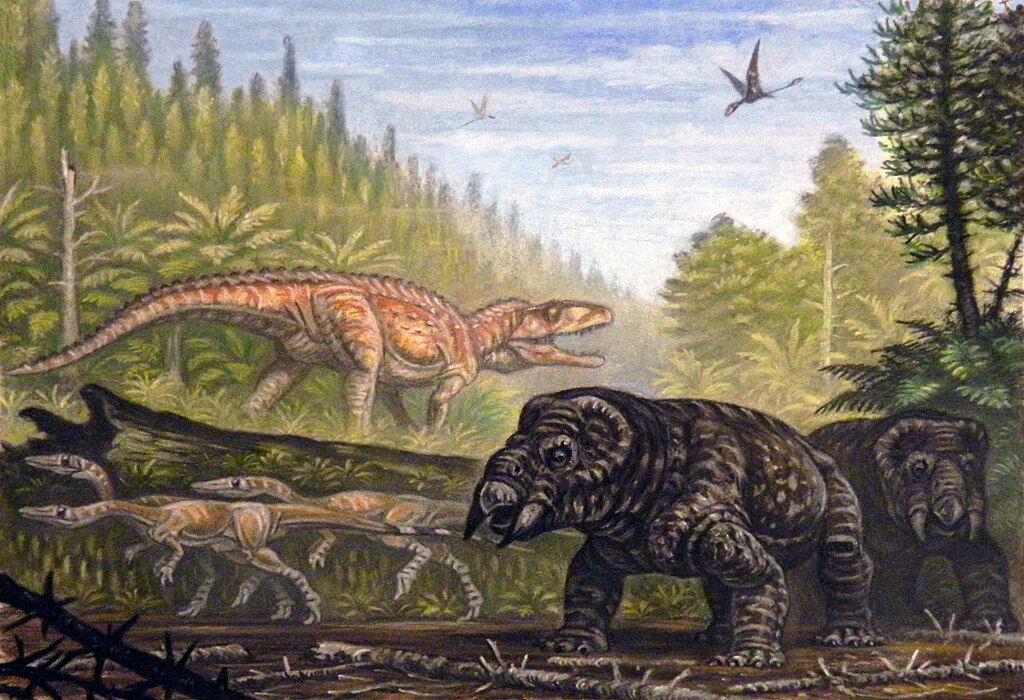The American West transformed our understanding of dinosaurs more than any other region on Earth. For nearly 150 years, fossil hunters have scoured the badlands from Montana to New Mexico, unearthing prehistoric giants that rewrote the story of life on our planet.
Picture yourself standing in the same Colorado foothills where Arthur Lakes first spotted massive bones jutting from the rock in 1877. That moment sparked what historians now call the “dinosaur rush” – a frenzied competition between scientists that gave us some of the most famous dinosaurs ever discovered. These fossil treasures didn’t just fill museum halls; they revolutionized how we think about extinction, evolution, and the incredible diversity of ancient life.
Tyrannosaurus rex – The King That Almost Wasn’t
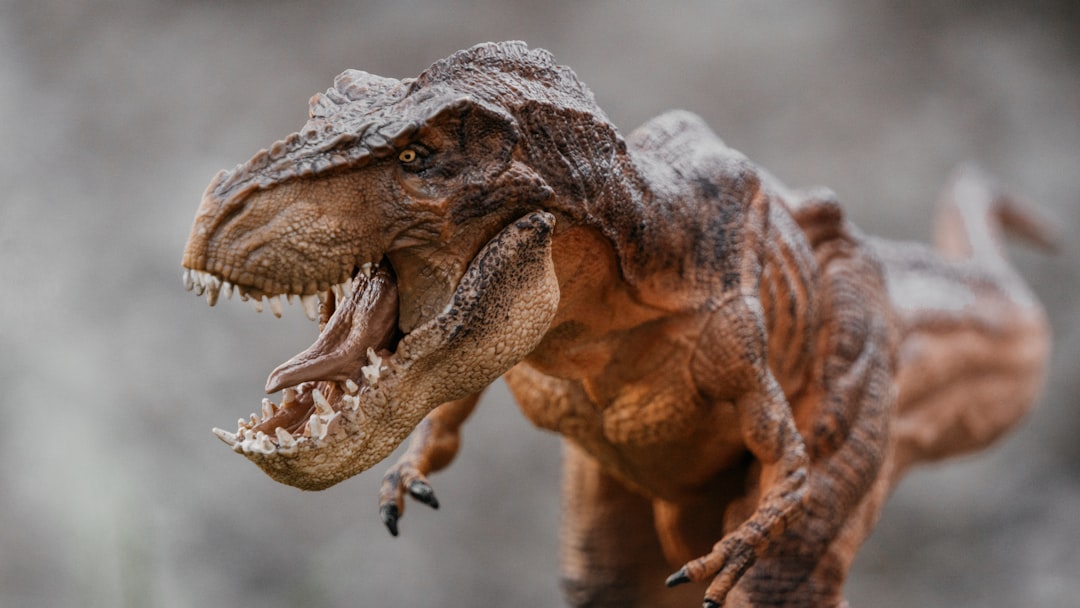
The first skeleton of Tyrannosaurus rex was discovered in 1902 in Hell Creek, Montana, by the Museum’s famous fossil hunter Barnum Brown. It took a full 3 years to excavate the beast. In 1905 when it was fully excavated (approximately 40-50% of it), Barnum transported the specimen to Osborn, the paleontology curator at the AMNH. What makes this discovery remarkable is its humble beginnings – Brown almost missed finding T. rex entirely.
Henry Fairfield Osborn, then the president of the Museum, gave the dinosaur its name in 1905: Tyrannosaurus rex, “the tyrant lizard king.” This partial skeleton became the holotype specimen, meaning all other potential T. rex fossils must be compared to it. This specimen is extremely important because it is the holotype of the species. Although a few specimens that are now known to belong to T. rex were found prior to the discovery of the holotype, the holotype was, by definition, the first fossil of the species to be recognized by science. Therefore, it can be considered the world’s first specimen of the world’s most famous dinosaur.
SUE the T. rex – Changing How We Study Dinosaur Biology
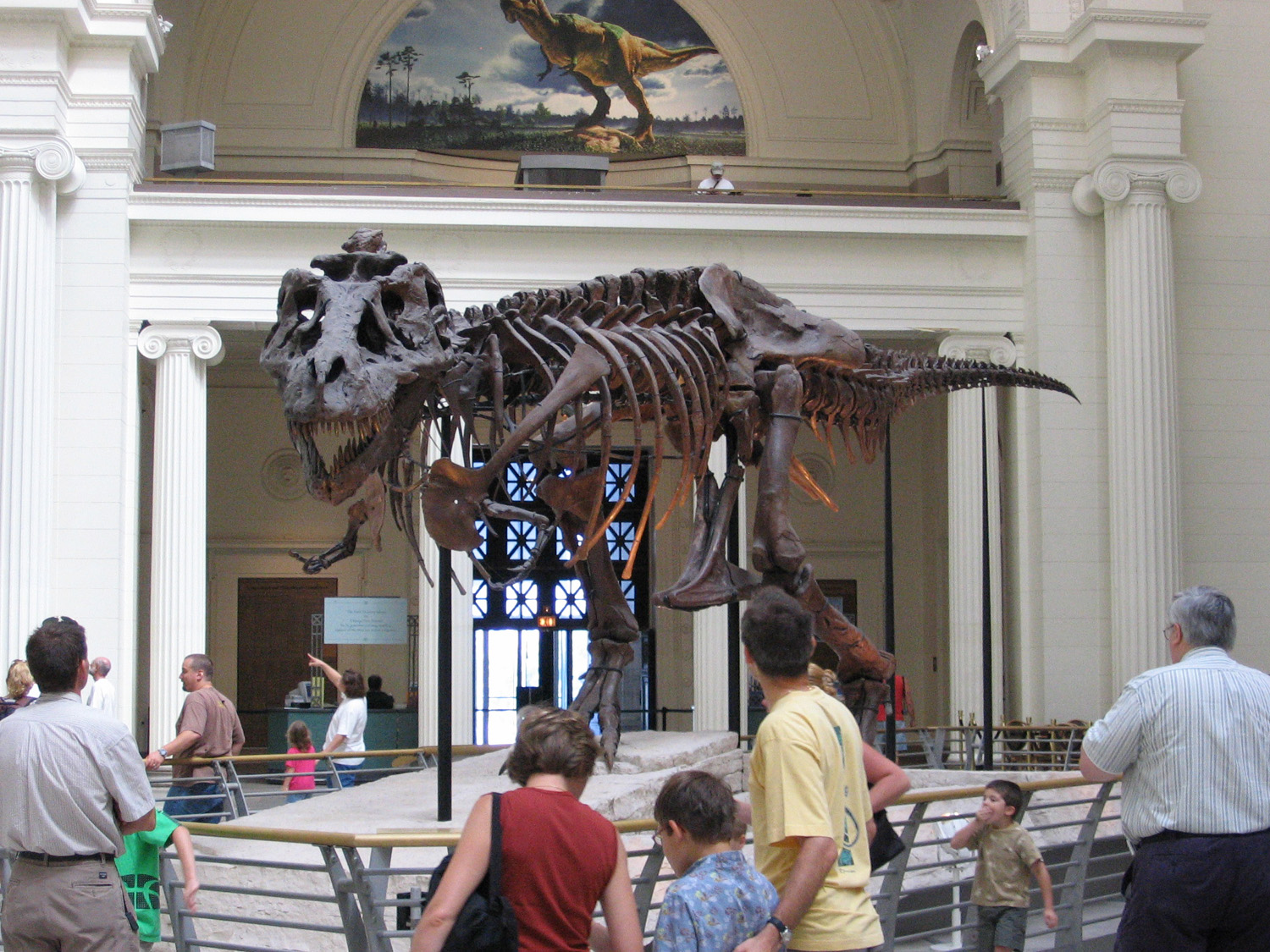
FMNH PR 2081 was discovered on August 12, 1990, by American explorer and fossil collector Sue Hendrickson, after whom it is named. After ownership disputes were settled, Sue was auctioned in October 1997 for US$8.3 million, at that time the highest price ever paid for a fossil. While more complete immature T. rex specimens have been uncovered since Sue’s discovery, Sue remains the most complete adult T. rex ever found. By bone volume, Sue is approximately 90 percent complete, with about 250 of the estimated 380 bones.
Sue revolutionized dinosaur research by providing unprecedented detail about T. rex biology. Dinosaur bones, like trees, have growth rings. By examining thin slices of the bone under a microscope, he identified growth rings that revealed how new bone was added each year. Cullen’s analysis showed that Sue had a period of extreme growth during adolescence – likely gaining 35-45 pounds per week – until reaching adult size by age 20. This discovery showed that T. rex grew faster than any land animal alive today.
Stegosaurus – The Armored Giant That Started a War
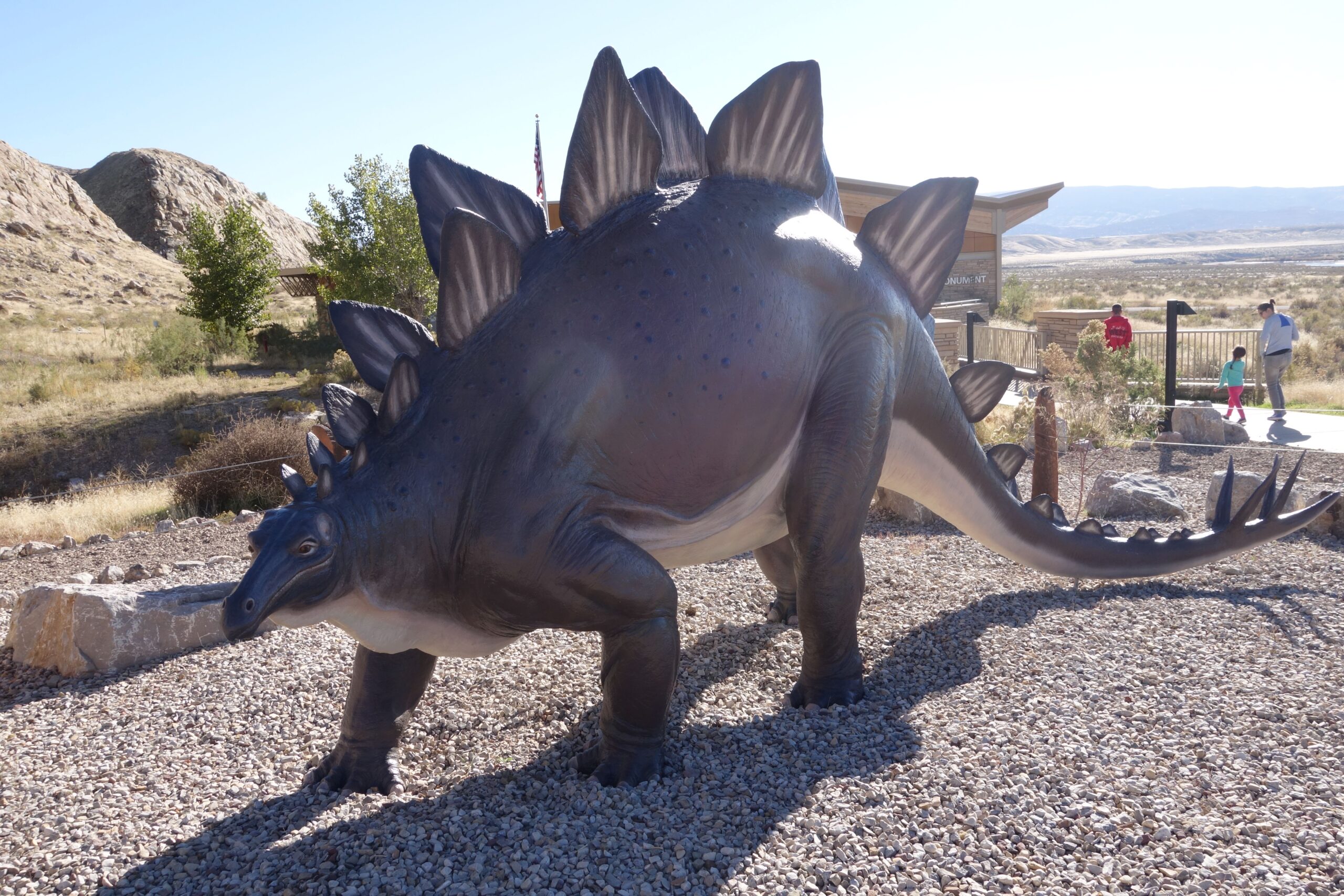
The first Stegosaurus in the world was discovered near Morrison, CO in 1877 and it was designated to be the official state fossil in 1982. The earliest specimens of Stegosaurus, Diplodocus, Apatosaurus, and Allosaurus were all found in Colorado in 1877. Stegosaurus was first discovered in the Morrison area. This discovery launched one of the most intense scientific rivalries in American history.
He contacted famed paleontologists Othniel Marsh and Edward Drinker Cope with news of his discoveries. Marsh and Cope, however, were bitter rivals and, by alerting them both to the discoveries in Colorado, Lakes inadvertently set off the famous “dinosaur wars.” The competition between these two men accelerated paleontological discovery across the American West. Stegosaurus became the first dinosaur with distinctive armor plating to be fully understood, showing scientists that herbivorous dinosaurs had developed sophisticated defense mechanisms.
Allosaurus – The First Complete Predator
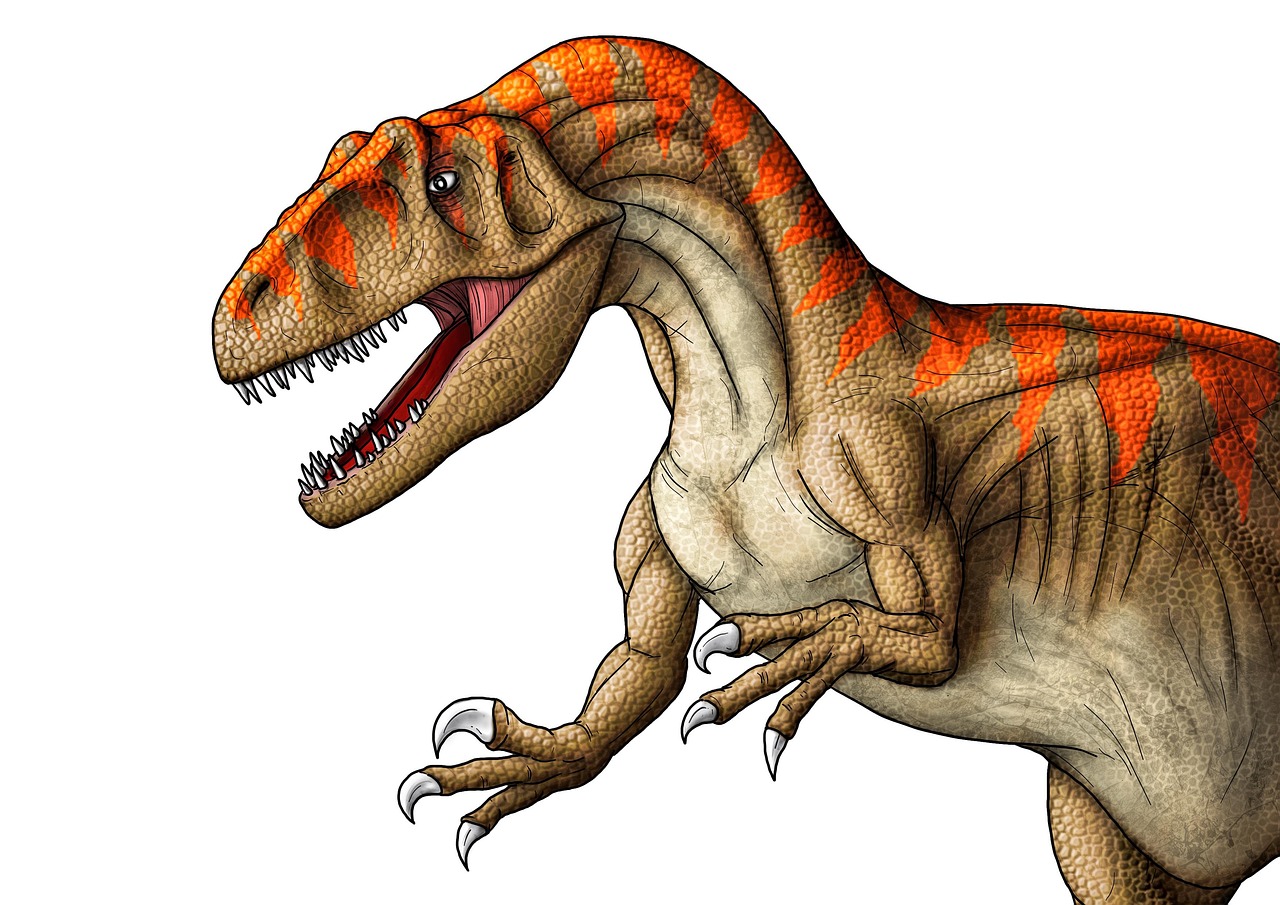
Allosaurus, Apatosaurus, Brontosaurus, Camarasaurus, Camptosaurus, Ceratosaurus, Diplodocus, and Stegosaurus are some of the most famous dinosaurs they named over a span of about 20 years. They made several important finds like the new species Allosaurus fragilis and Diplodocus longus. The discovery of Allosaurus fragilis at Garden Park, Colorado, provided paleontologists with their first detailed look at a large theropod predator.
Unlike the fragmentary T. rex remains found earlier, Allosaurus specimens were remarkably complete. This allowed scientists to understand predator anatomy in detail for the first time. The discovery showed that large carnivorous dinosaurs were built for speed and agility, not just brute force. Allosaurus fossils revealed evidence of pack hunting behavior and sophisticated hunting strategies that challenged earlier assumptions about dinosaur intelligence.
Hadrosaurus foulkii – America’s First Nearly Complete Dinosaur
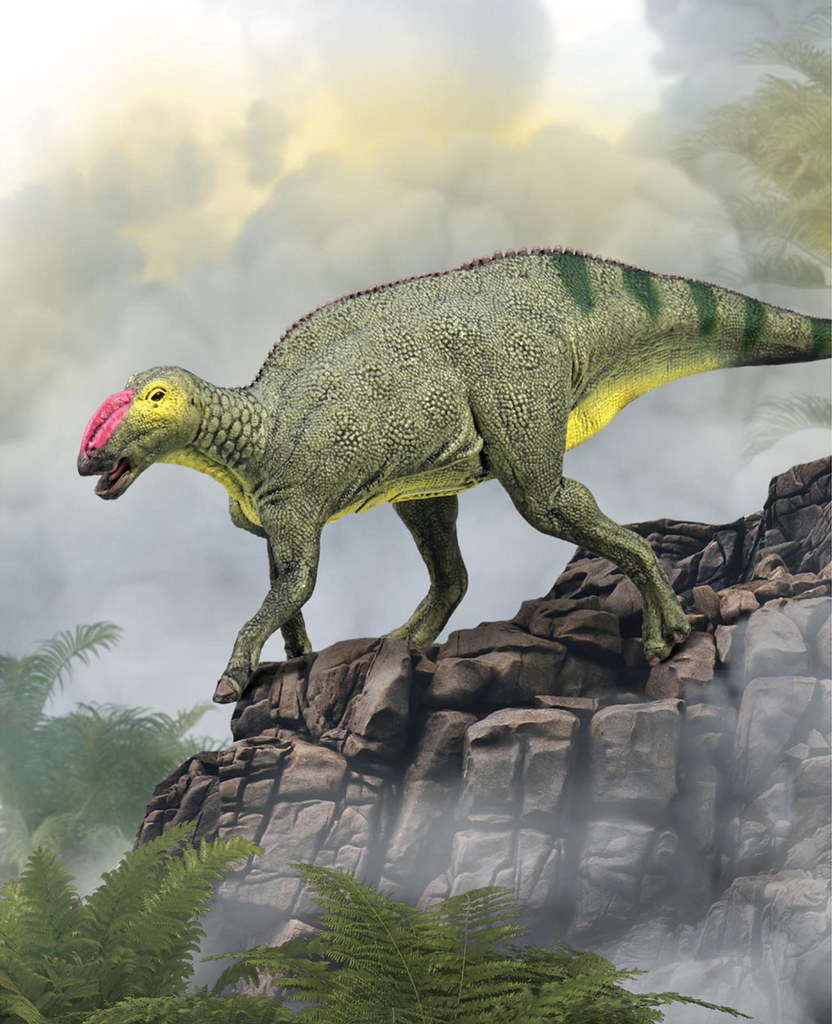
The Hadrosaurus foulkii was the first mostly complete dinosaur skeleton ever found in North America and marked a significant moment in the field of vertebrate paleontology in the late 1800s. In 1858, Leidy described a much more complete specimen from New Jersey as Hadrosaurus, which would give its name to the “duck-billed dinosaurs”. The discovery site is now a National Natural Landmark.
He invited his friend, Philadelphia anatomist and founder of vertebrate paleontology, Dr. Joseph Leidy, to join him. Together they retrieved a nearly complete dinosaur skeleton with only the skull missing. They measured the femur at an astonishing length of 4 feet and estimated that Hadrosaurus foulkii must have been at least 25 feet long. This discovery fundamentally changed how scientists viewed dinosaur posture and behavior. Noting the orientation of the pelvis, Leidy believed this new specimen was bipedal with an upright posture, unlike the sprawling posture of Iguanodon.
Apatosaurus – The Giant That Sparked Confusion
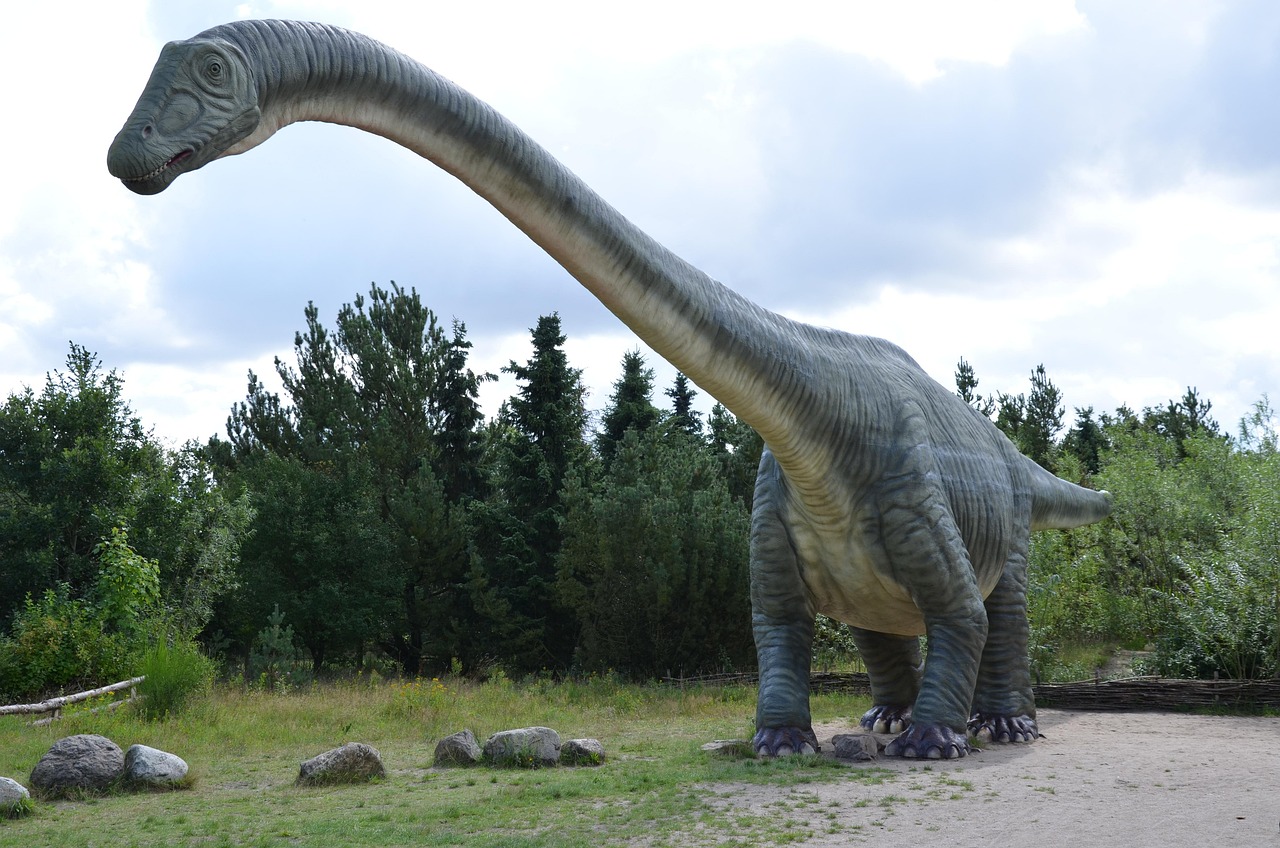
The discoveries, which included the world’s first known Stegosaurus and Apatosaurus fossils, helped launch a “dinosaur rush” in the late nineteenth century. This year, Marsh will name the Stegosaurusfrom bones found near Morrison, Colorado as well as the Apatosaurus ajax. Two years later, he will name another specimen Brontosaurus excelsus, believing it to belong to another genus. However, it is later determined that the two creatures belong to the same genus, and the term Brontosaurus is dropped from formal usage.
The Apatosaurus discovery demonstrated the massive scale that some dinosaurs could achieve. A nearly complete skeleton of Apatosaurus, meanwhile, was found in Gunnison County. This find showed paleontologists that sauropod dinosaurs could reach lengths of over 70 feet and weights of 30 tons. The confusion between Apatosaurus and Brontosaurus also highlighted the importance of careful scientific naming and the competitive nature of early paleontology.
Camarasaurus – The First Sauropod Success Story
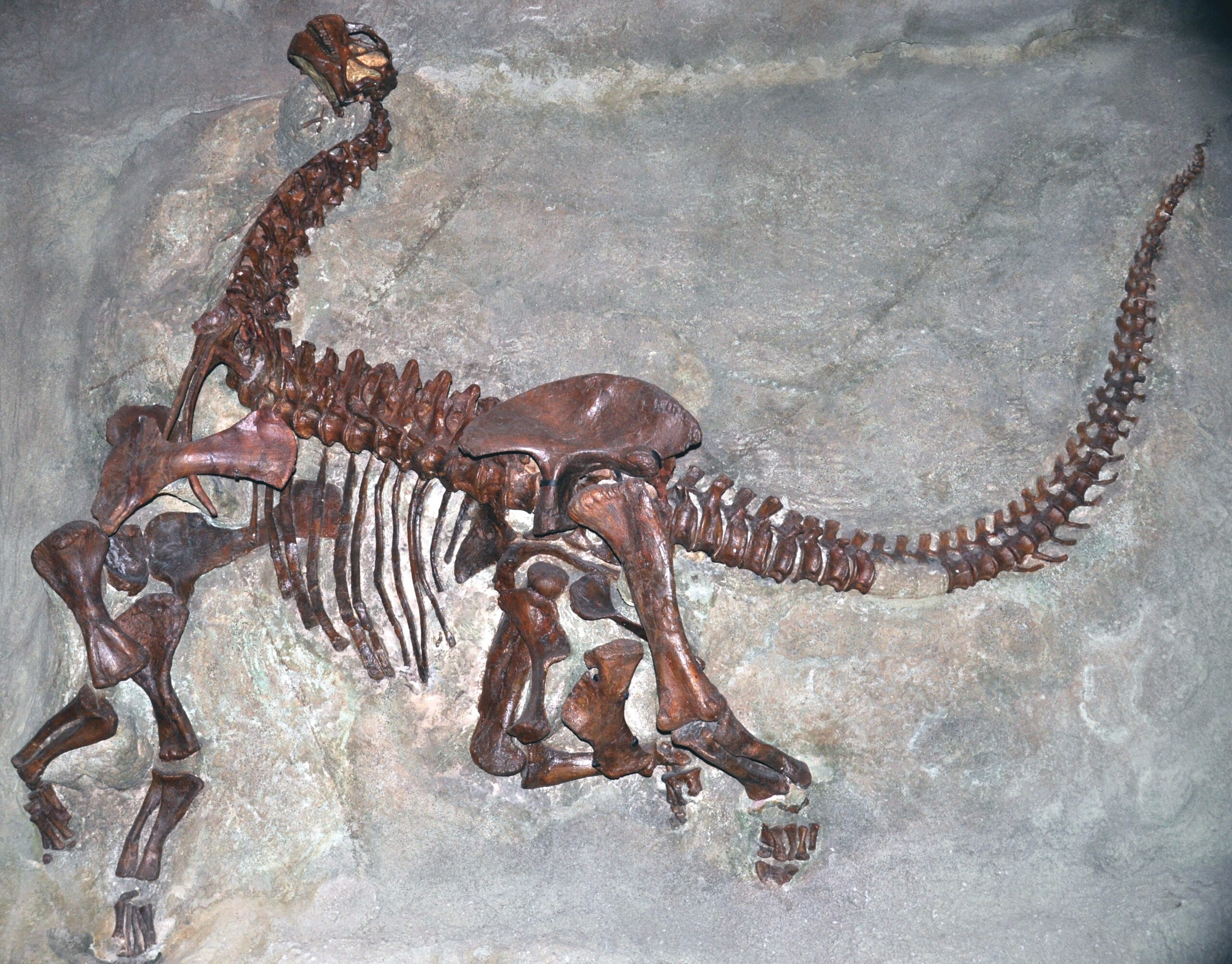
By August of the same year, Cope had formally named the new species excavated by the Lucas brothers Camarasaurus supremus. Discovered in Colorado during the height of the Bone Wars, Camarasaurus became one of the best-understood sauropods of its time. Unlike many dinosaur discoveries that consisted of fragmentary remains, Camarasaurus specimens included complete skulls and articulated skeletons.
This dinosaur’s discovery helped scientists understand sauropod feeding strategies and social behavior. Camarasaurus fossils suggested these giants lived in herds and had complex social structures. The quality of preservation in Camarasaurus specimens allowed researchers to study dinosaur growth patterns and determine that sauropods continued growing throughout their lives, reaching massive sizes never seen in modern animals.
Triceratops – The Three-Horned Face That Defined an Era
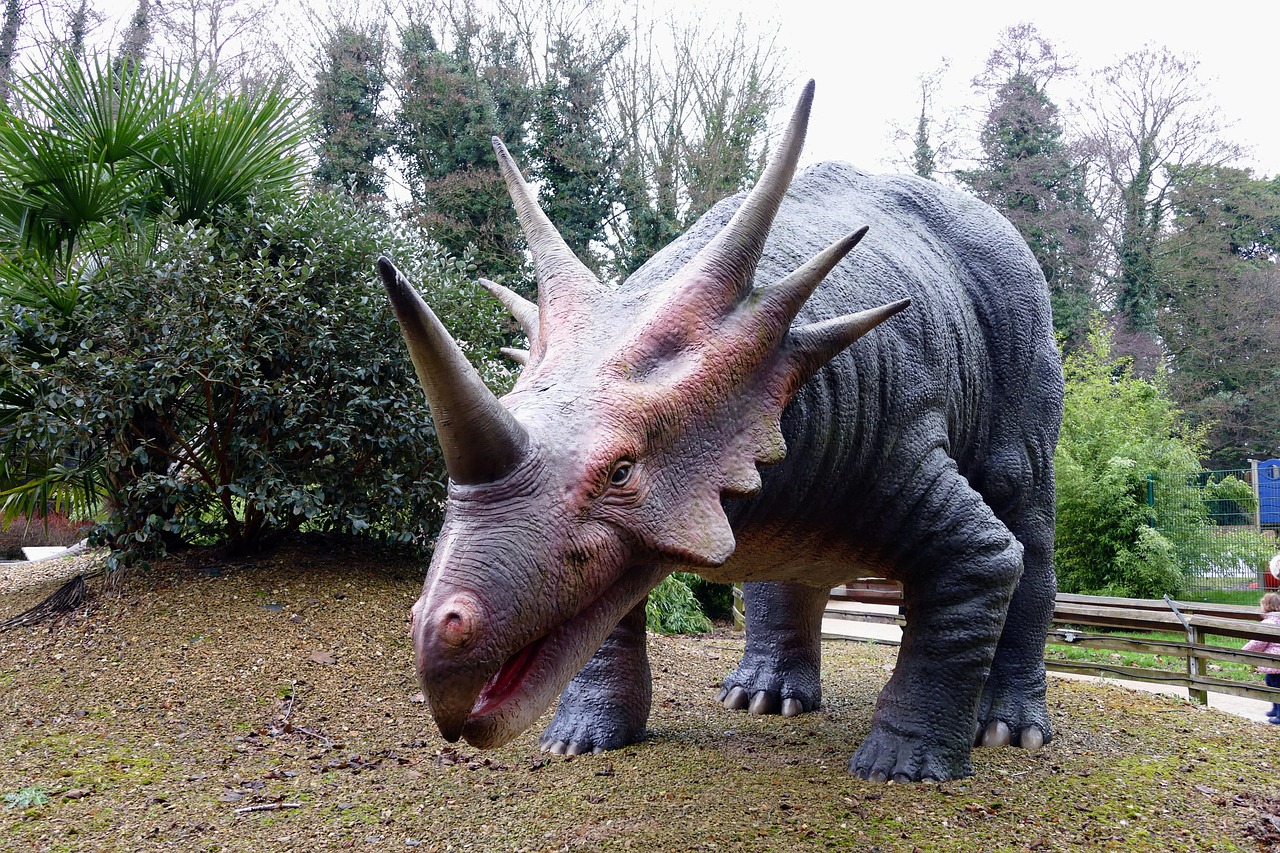
Otis Rooney discovers the first horned dinosaur fossils from a gulch near the intersection of the present Alameda Parkway, Bear Creek Boulevard, and West Jewell Avenue. The first Triceratops discovery to be published occurs near present day North Federal Boulevard in Denver. The discovery of Triceratops in Colorado marked the beginning of our understanding of ceratopsian dinosaurs – the horned and frilled herbivores that dominated the late Cretaceous period.
Triceratops fossils revealed sophisticated defensive adaptations that challenged assumptions about herbivorous dinosaurs being passive prey animals. It looks like there are multiple dinosaurs at the site around Chatfield Reservoir, including the most complete Triceratops ever found in Colorado. It includes most of the skull and big parts of the skeleton from the hips, tails, arms, and legs. These discoveries showed that Triceratops lived alongside T. rex, creating one of the most famous predator-prey relationships in paleontology. The massive skulls and defensive horns demonstrated that late Cretaceous ecosystems were far more complex and dangerous than previously imagined.
Diplodocus – The Whip-Tailed Wonder
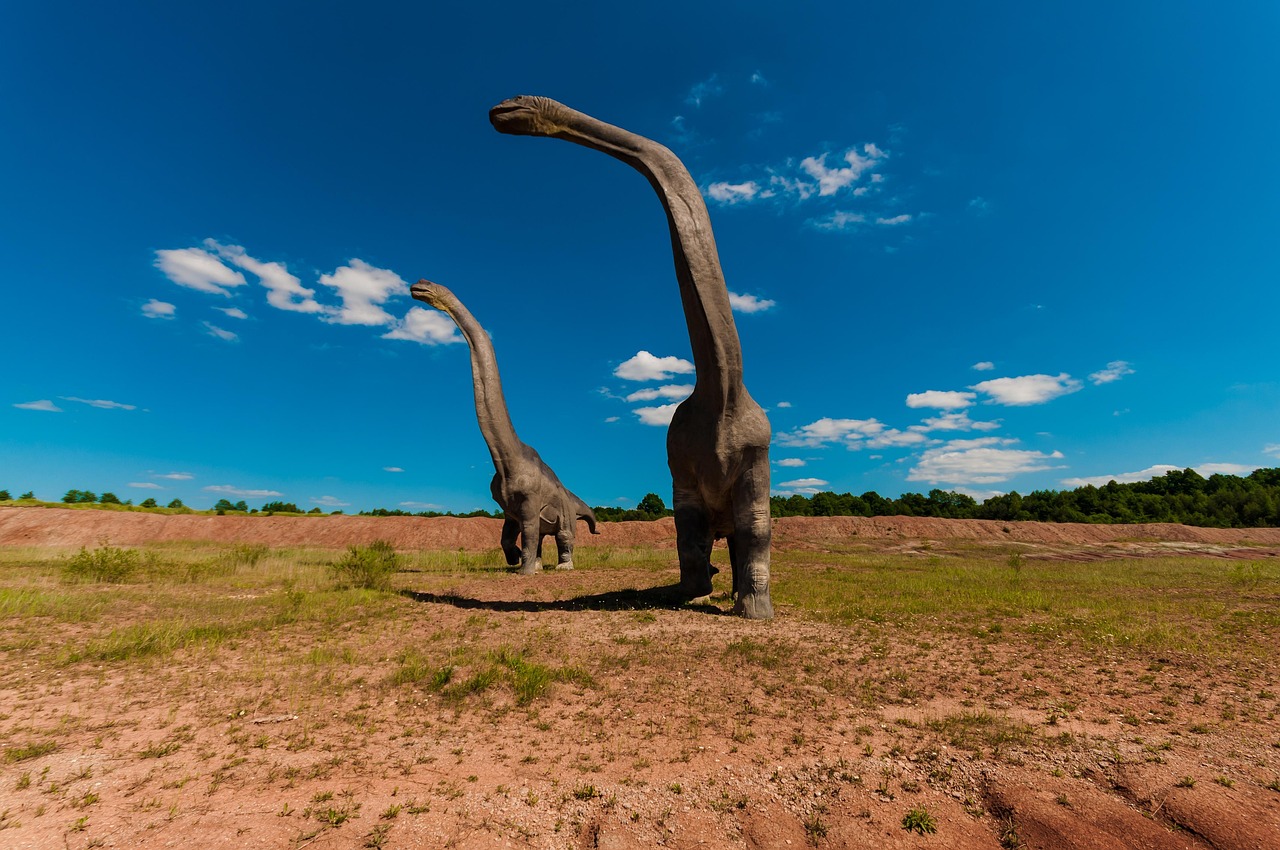
Two especially famous dinosaur specimens were found in 1899 and 1900. In 1899, a field expedition financed by industrialist Andrew Carnegie uncovered a mostly complete skeleton of Diplodocus in Wyoming. With pieces from other skeletons to fill in the missing bones, this specimen, “Dippy”, was used to make casts that Carnegie sent to a number of other countries for display. “Dippy” became an iconic dinosaur in Europe, the first dinosaur skeleton that many people ever saw exhibited.
The Diplodocus discovery revolutionized our understanding of sauropod anatomy and behavior. This dinosaur’s incredibly long tail, which could function like a whip, showed that sauropods had active defense mechanisms. The quality of the Wyoming specimens allowed scientists to create the first accurate reconstructions of complete sauropod skeletons, influencing museum displays worldwide and shaping public perception of dinosaurs for generations.
Ahvaytum bahndooiveche – North America’s Oldest Dinosaur
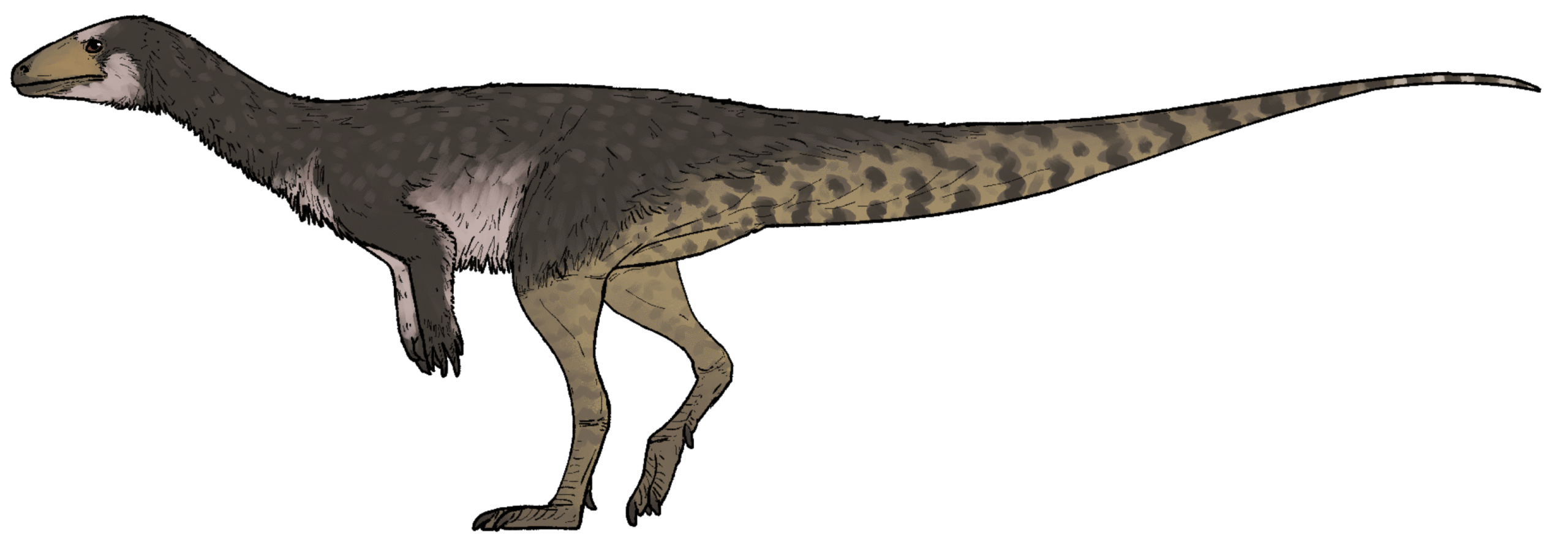
But now, a newly described dinosaur whose fossils were uncovered by University of Wisconsin–Madison paleontologists is challenging that narrative, with evidence that the reptiles were present in the northern hemisphere millions of years earlier than previously known. The UW–Madison team has been analyzing the fossil remains since they were first discovered in 2013 in present-day Wyoming. The creature, named Ahvaytum bahndooiveche, is among the oldest known Laurasian dinosaurs, and with fossils estimated to be around 230 million years old.
While the scientific team is confident they’ve discovered North America’s oldest dinosaur, it’s also the first dinosaur species to be named in the language of the Eastern Shoshone Tribe, whose ancestral lands include the site where the fossils were found. Eastern Shoshone tribal elders and middle school students were integral to the naming process. Ahvaytum bahndooiveche broadly translates to “long ago dinosaur” in the Shoshone language. This discovery pushes back the timeline of dinosaur evolution in North America by millions of years and represents a new approach to paleontology that includes Indigenous perspectives in scientific naming.
Conclusion
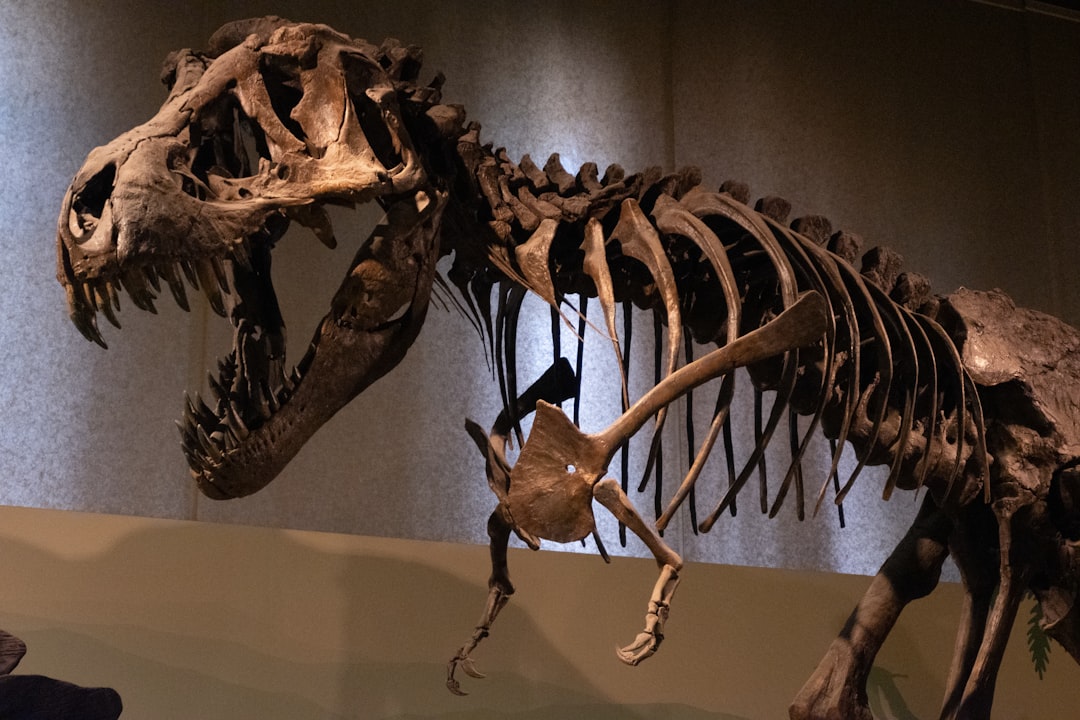
These ten dinosaur discoveries from the United States didn’t just add names to textbooks – they fundamentally changed how we understand life on Earth. From the massive predators like T. rex to the armored herbivores like Stegosaurus, each find revealed new aspects of dinosaur biology, behavior, and evolution. The American West remains one of the world’s most important paleontological regions, continuing to yield new discoveries that challenge our assumptions about prehistoric life.
These fossils taught us that dinosaurs were far more diverse, intelligent, and successful than early scientists imagined. They lived in complex ecosystems, developed sophisticated social behaviors, and achieved sizes and adaptations that have never been matched in the modern world. What discoveries do you think are still waiting to be found in the American badlands?

